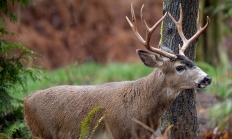
Search myodfw.com


The Landowner Preference Program (LOP) was established to acknowledge the contribution of private lands to support wildlife and provide a form of compensation to landowners for resources used by wildlife. Tags are available to landowners, family members, and others designated by the landowner based on the acreage owned. Pronghorn hunts are only available to landowners and family members. Recipients of LOP tags may only hunt on the property for which they are registered. step-by-step instructions Create Landowner Account

August, September and October are the months when most big game hunters will be in the woods or on the grasslands. Many hunters have long-standing traditions of deer or elk camp spent with family and friends. Visit e-regulations





Find maps, boundary descriptions and hunts available in the new DeGarmo Hunt Area. Download printable PDF map
Find maps, boundary descriptions and hunts available in the new Northeast Hunt Area. Download printable PDF map
Find maps, boundary descriptions and hunts available in the new Northeast Hunt Area. Download printable PDF map
Find maps, boundary descriptions and hunts available in the new Northeast Hunt Area. Download printable PDF map
Find maps, boundary descriptions and hunts available in the new Northeast Hunt Area. Download printable PDF map
Find maps, boundary descriptions and hunts available in the new Jackknife Hunt Area. Download printable PDF map
Find maps, boundary descriptions and hunts available in the new Northeast Hunt Area. Download printable PDF map
Find maps, boundary descriptions and hunts available in the new Helix Hunt Area. Download printable PDF map

